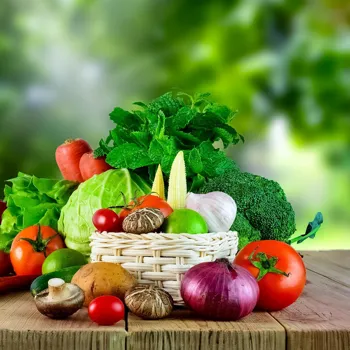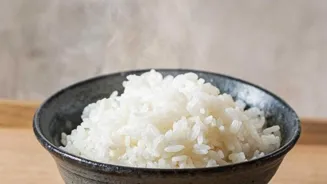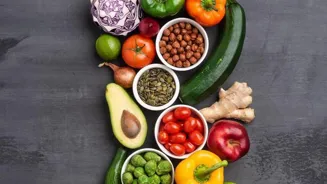Uncover the Evolution of Nutrition: Journey from Foraging to Supermarkets. Explore how our food choices have shaped history
From foraging forests to ordering online, the way we eat has changed dramatically
over centuries. Our ancestors focused on survival, consuming whatever they could find. Today, many of us have the luxury of choosing from a global supermarket, but this abundance comes with its own set of challenges.

Understanding this nutritional journey is key to making informed food choices in the 21st century. Let's rewind and explore how our diets have evolved.
Prehistoric humans thrived on natural, nutrient-dense diet
In prehistoric times, humans were hunter-gatherers. Berries, fruits, roots, and grains formed the bulk of their diet. This was a time of feast or famine, dependent on the seasons and the availability of natural resources.
The nomadic lifestyle meant a varied intake, often dictated by geographical location. Some tribes might have relied more on plants, while others in colder regions adapted to subsistence on very few options available.
The concept of a "balanced diet" as we understand it now was nonexistent; survival was the ultimate goal. This diet, though limited, forced reliance on whole, unprocessed foods. The human body, shaped by evolution, actually thrived on these natural, nutrient-dense options.
There was little to no sugar or refined carbohydrates prevalent in today’s diet of a typical person.
Agricultural revolution led to stable communities but reduced dietary diversity
The agricultural revolution, which began around 10,000 BC, brought about a seismic shift. Humans transitioned from nomadic hunter-gatherers to settled farmers. Cereals like wheat, rice, and maize became staples.
This guaranteed reliable food supply, creating stable communities and enabling the growth of civilizations. But, it also brought some dietary drawbacks. Humans started relying heavily on a few select crops which reduced dietary diversity and led to nutritional deficiencies.
Furthermore, grains required processing techniques like grinding and milling, which, while making them easier to digest, often removed valuable nutrients. The rise of agriculture also meant humans started altering the land leading to impact on ecology and even their future nutritional choices.
Trade and exploration diversified diets but also introduced unhealthy eating habits
The advent of trade and exploration further transformed food habits. Spices from the East, previously expensive and rare, reached Europe and other parts of the world, flavouring bland meals.
New World crops, like potatoes, tomatoes, and corn, were introduced to Europe, Asia, and Africa, enriching diets. However, trade also facilitated the spread of less desirable products, such as refined sugar, which, though a luxury item initially, eventually became a dietary staple.
The exchange of food across continents definitely improved dietary variety in many regions. But on the other hand, the trade in less nutritional food items also started a trend of unhealthy eating amongst people. This transformation changed the taste buds and habits of generation to come.
Industrialization boosted food production, led to processed foods' rise
Industrialization in the 18th and 19th centuries led to mass production, increasing food availability drastically. Factories churned out processed foods that were convenient and often cheaper than fresh produce.
Innovations like canning kept food preserved for longer duration, enabling long-distance transportation. This era saw the rise of food industries and marketing began to influence food choices.
While the production improved the supply of food items to every house including the poor, processed food items are always low in nutrients. It encouraged the habit of packaged food consumption rather than eating fresh produce.
This era led to both positive and negative effects on the nutritional habits of people.
Modern food challenges: over-processed options vs. health awareness
The 20th and 21st centuries have witnessed an explosion of information and technological advancements in food production and distribution. We now have access to a wide array of foods from all corners of the globe. However, this abundance has also led to new challenges.

Over-processed foods, high in sugar, salt, and unhealthy fats, are widely available and heavily marketed. Sedentary lifestyles coupled with poor food choices contribute to concerns like obesity, diabetes, and heart disease.
Thankfully, increased health awareness is nudging individuals to make informed dietary choices. There is a growing emphasis on organic foods, plant-based diets, and understanding the importance of micronutrients.
The food industry is also evolving with technological developments to provide more options to consumers.
Embracing healthy, sustainable food choices for global well-being
Today, we stand at a crucial juncture. We have the knowledge and resources to make healthier and more sustainable food choices. Understanding the history of nutrition highlights the critical importance of a diverse diet rich in whole, unprocessed foods.
Encouraging local agriculture, reducing food wastage, and promoting mindful eating will be key to building healthier communities and securing a sustainable food future.
This conscious effort will improve overall health and ensure a sustainable environment for every people in every country across the world. Choosing a good diet is not only advantageous to sustain health but it also improves our cognitive skills which is vital for proper functioning.











